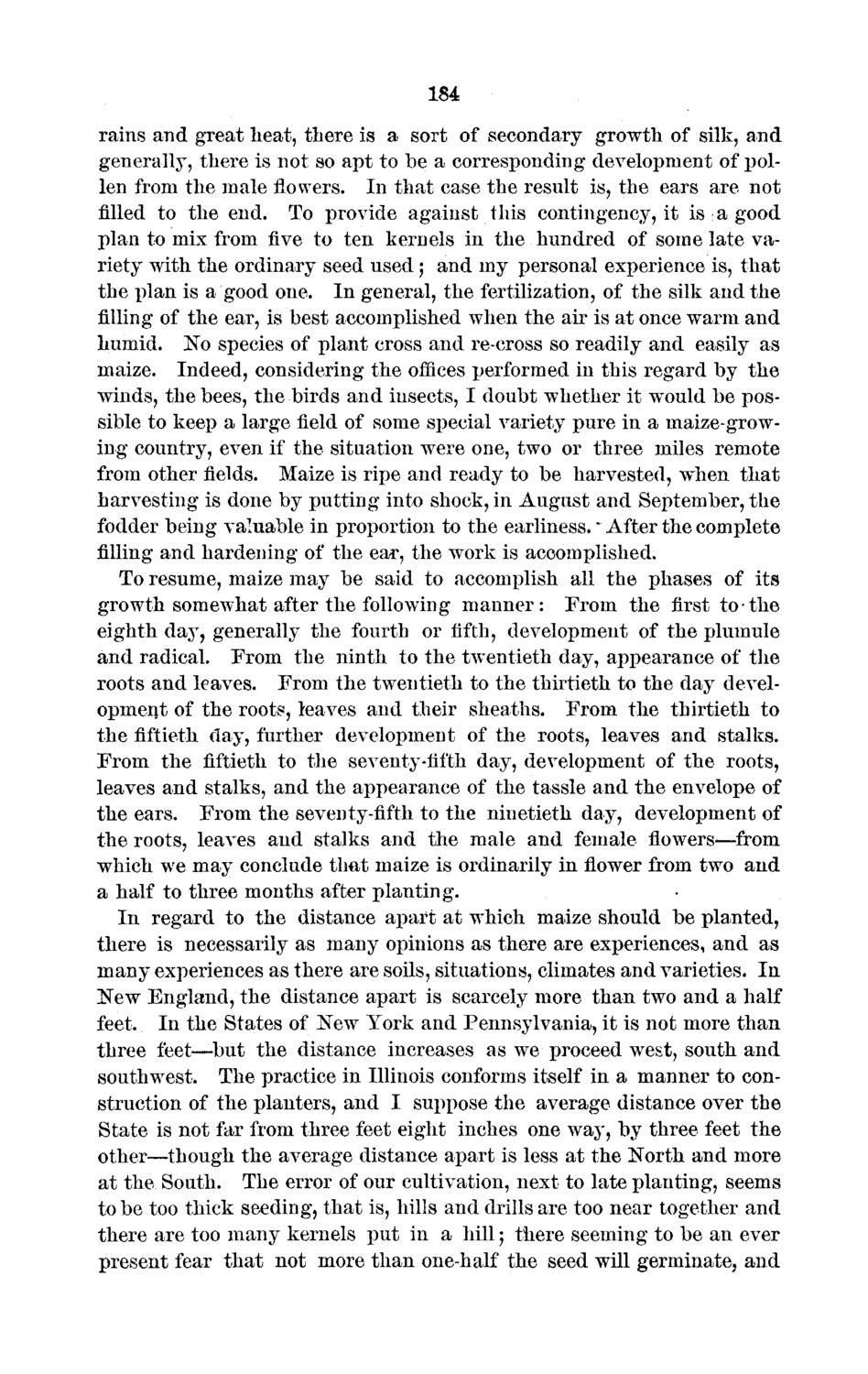| |
| |
Caption: Board of Trustees Minutes - 1872
This is a reduced-resolution page image for fast online browsing.

EXTRACTED TEXT FROM PAGE:
184 rains and great heat, there is a sort of secondary growth of silk, and generally, there is not so apt to he a corresponding development of pollen from the male flowers. In that case the result is, the ears are not filled to the end. To provide against this contingency, it is a good plan to mix from Hve to ten kernels in the hundred of some late variety with the ordinary seed used; and my personal experience is, that the plan is a good one. In general, the fertilization, of the silk and the filling of the ear, is best accomplished when the air is at once warm and humid. No species of plant cross and re-cross so readily and easily as maize. Indeed, considering the offices performed in this regard by the winds, the bees, the birds and insects, I doubt whether it would be possible to keep a large field of some special variety pure in a maize-growing country, even if the situation were one, two or three miles remote from other fields. Maize is ripe and ready to be harvested, wiien that harvesting is done by putting into shock, in August and September, the fodder being valuable in proportion to the earliness. * After the complete filling and hardening of the ear, the work is accomplished. To resume, maize may be said to accomplish all the phases of its growth somewhat after the following manner: From the first to the eighth day, generally the fourth or fifth, development of the plumule and radical. From the ninth to the twentieth day, appearance of the roots and leaves. From the twentieth to the thirtieth to the day development of the roots, leaves and their sheaths. From the thirtieth to the fiftieth day, further development of the roots, leaves and stalks. From the fiftieth to the seventy-fifth day, development of the roots, leaves and stalks, and the appearance of the tassle and the envelope of the ears. From the seventy-fifth to the ninetieth day, development of the roots, leaves and stalks and the male and female flowers—from which we may conclude that maize is ordinarily in flower from two and a half to three months after planting. In regard to the distance apart at which maize should be planted, there is necessarily as many opinions as there are experiences, and as many experiences as there are soils, situations, climates and varieties. In New England, the distance apart is scarcely more than two and a half feet. In the States of New York and Pennsylvania, it is not more than three feet—but the distance increases as we proceed west, south and southwest. The practice in Illinois conforms itself in a manner to construction of the planters, and I suppose the average distance over the State is not far from three feet eight inches one way, by three feet the other—though the average distance apart is less at the North and more at the South. The error of our cultivation, next to late planting, seems to be too thick seeding, that is, hills and drills are too near together and there are too many kernels put in a hill ; there seeming to be an ever present fear that not more than one-half the seed will germinate, and
| |